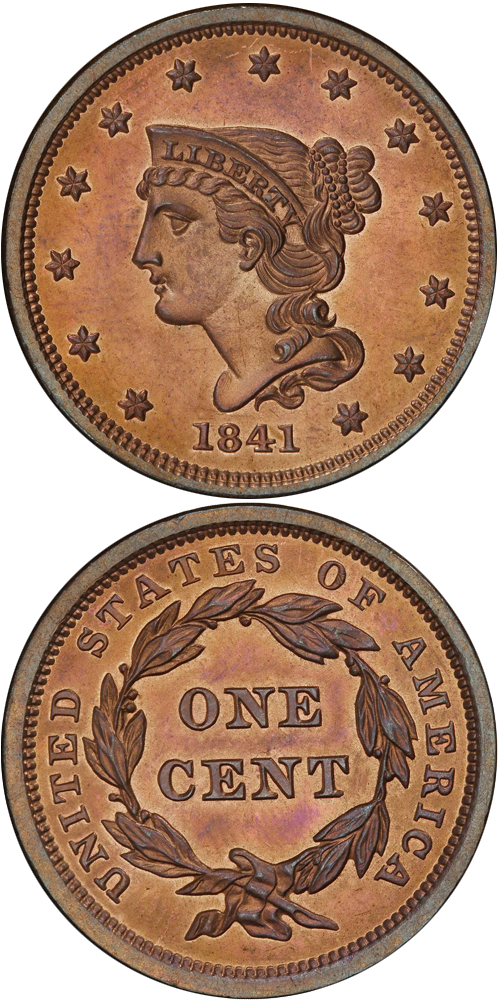1841 Braided Hair Cent
The vast majority of the Proof large cents bearing the dates 1817 through 1838 were struck from dies that were also used to produce coins intended for circulation. This is likely due in part to challenges and costs associated with die production, which waned as the years progressed and technology improved, but it is also likely a factor of limited collector demand. Of all the Proofs struck in this period, just one extremely rare variety, the 1834 Newcomb-7, was struck in Proof format only. The 1841 Newcomb-1 marks a change in this practice in that it is the first case of Proof-only dies being used to make a relatively large quantity of large cents, suggesting a desire at the Mint to prepare a more standardized product of superior finished quality. It was not a procedure adhered to in every case, but there are several Proof-only issues from 1841 through the end of the series in 1857. While some question has been cast upon certain coins among the "Proof" cents in this period as to their true nature, those struck from Proof-only dies guarantee the intent at the time of manufacture, as opposed to an otherwise necessary reliance upon a coin's physical attributes for such determination.
The example to the left was sold by Stack's Bowers Galleries in the JD. Brent Pogue Part V Auction, where it realized $28,200.






